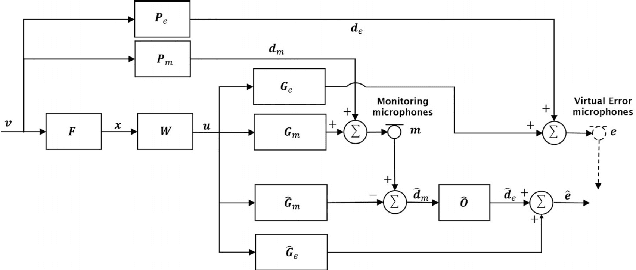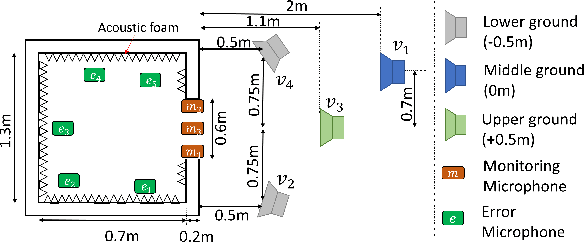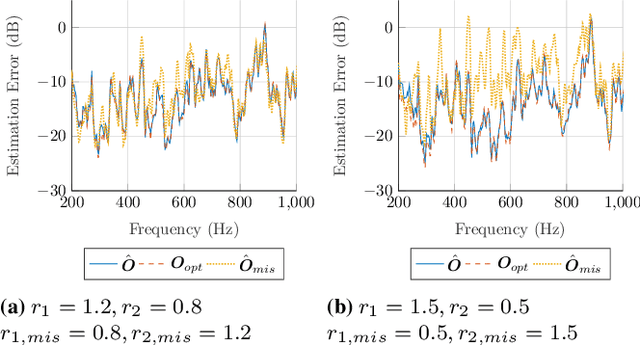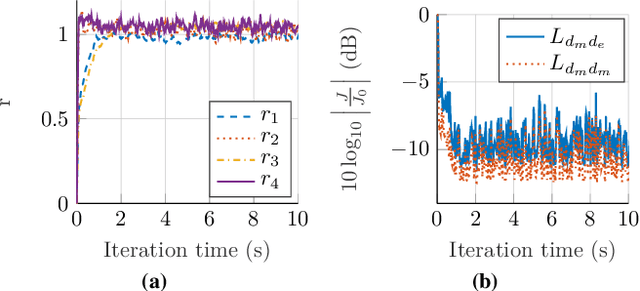Chung Kwan Lai
MOV-Modified-FxLMS algorithm with Variable Penalty Factor in a Practical Power Output Constrained Active Control System
Jun 15, 2023Abstract:Practical Active Noise Control (ANC) systems typically require a restriction in their maximum output power, to prevent overdriving the loudspeaker and causing system instability. Recently, the minimum output variance filtered-reference least mean square (MOV-FxLMS) algorithm was shown to have optimal control under output constraint with an analytically formulated penalty factor, but it needs offline knowledge of disturbance power and secondary path gain. The constant penalty factor in MOV-FxLMS is also susceptible to variations in disturbance power that could cause output power constraint violations. This paper presents a new variable penalty factor that utilizes the estimated disturbance in the established Modified-FxLMS (MFxLMS) algorithm, resulting in a computationally efficient MOV-MFxLMS algorithm that can adapt to changes in disturbance levels in real-time. Numerical simulation with real noise and plant response showed that the variable penalty factor always manages to meet its maximum power output constraint despite sudden changes in disturbance power, whereas the fixed penalty factor has suffered from a constraint mismatch.
Real-time modelling of observation filter in the Remote Microphone Technique for an Active Noise Control application
Mar 21, 2023



Abstract:The remote microphone technique (RMT) is often used in active noise control (ANC) applications to overcome design constraints in microphone placements by estimating the acoustic pressure at inconvenient locations using a pre-calibrated observation filter (OF), albeit limited to stationary primary acoustic fields. While the OF estimation in varying primary fields can be significantly improved through the recently proposed source decomposition technique, it requires knowledge of the relative source strengths between incoherent primary noise sources. This paper proposes a method for combining the RMT with a new source-localization technique to estimate the source ratio parameter. Unlike traditional source-localization techniques, the proposed method is capable of being implemented in a real-time RMT application. Simulations with measured responses from an open-aperture ANC application showed a good estimation of the source ratio parameter, which allows the observation filter to be modelled in real-time.
 Add to Chrome
Add to Chrome Add to Firefox
Add to Firefox Add to Edge
Add to Edge